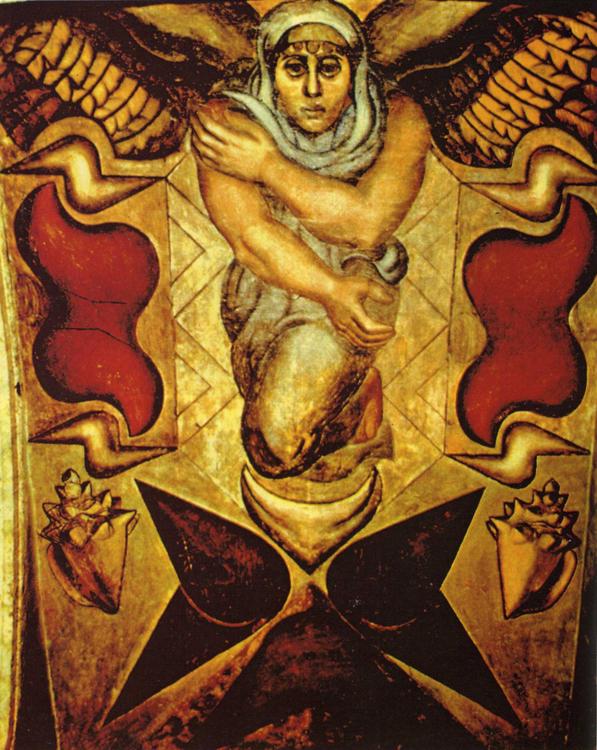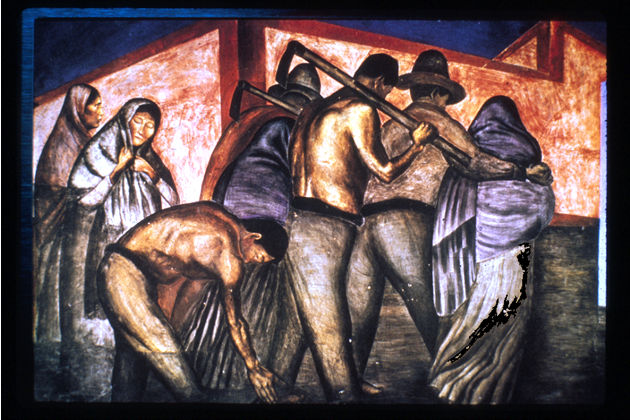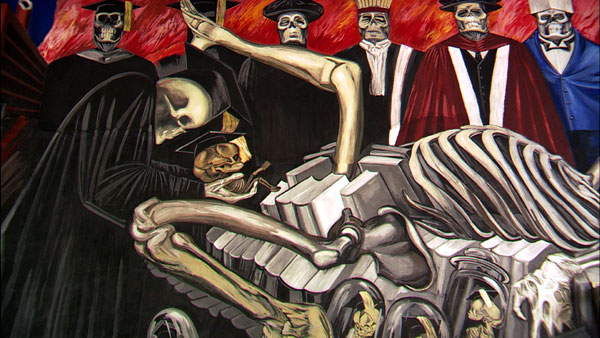Curatorial Statement
The Mexican Revolution was a civil war that waged from 1910 to 1920 when the working class revolted against dictator Porfirio Diaz and demanded rights for the common people – access to healthcare and education and expanded civil liberties. When the Revolution was won, the Mexican Muralism movement was born. Headed by Diego Rivera, José Clemente Orozco, and David Alfaro Siqueiros, a trio that would come to be called “The Big Three,” the movement was created as a way to educate the massive illiterate population. Muralism glorified the nation of Mexico and it’s people, while also criticizing the white, elite Capitalist class.
Using atypical imagery, the Muralists sought to synthesize the ancient and recent past. Their works featured subjects from Mesoamerican mythology (the Aztec deities, Coatlicue and Quetzalcoatl, and the Incan goddess, Pachamama), Christian tradition (Christ, the Virgin Mary, and the Virtues), and their own history (the Conquest of Tenochtitlán and the Mexican Revolution). The Big Three drew on the artistic traditions of Italian frescos, which Rivera studied extensively while abroad in Europe, as well as the artwork of their contemporaries, such as the Calaveras of José Guadalupe Posada. Mexican mural work is characterized by strong lines, bold colors, and monumental figures.
Most of these murals were large-scale and on the sides of public buildings where they were accessible to the public. Others were smaller, portable frescos that could thus reach a wider audience. The earliest murals of this movement were commissioned by the new Mexican government, and are located in the National Preparatory School in Mexico City. Later, the movement was carried into America, ironically by the very people the Muralists so criticized – white Capitalists such as the Rockefellers. Regardless, the themes remained much the same – glorification of the Mexican culture and people, and condemnation of the greed of Capitalism.











